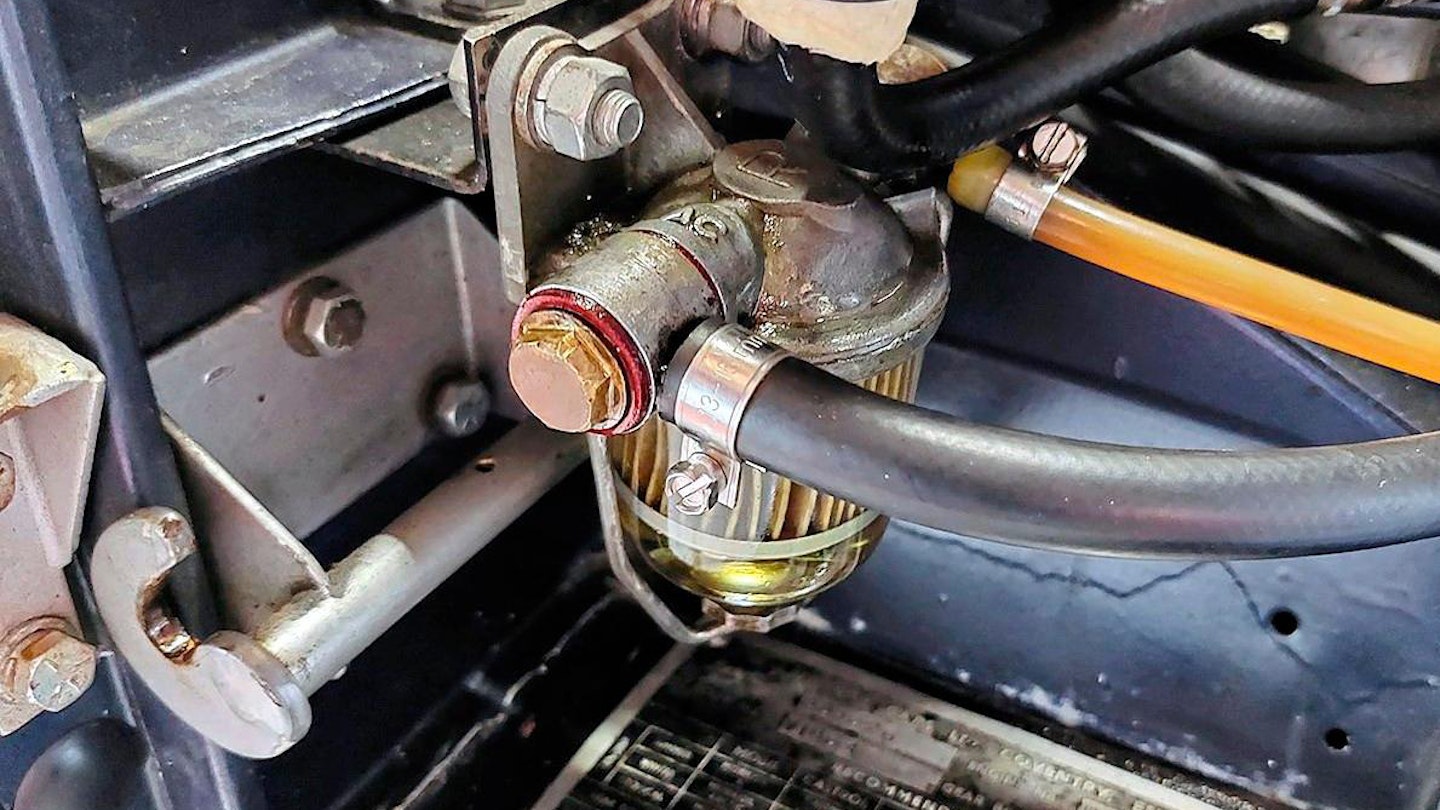[ OUR CARS ] 1962 Jaguar E-type S1 FHC
Owned by Phil Bell (phil.bell@bauermedia.co.uk)
Time owned 15 years
Latest/total miles 0/111,495
Latest/total costs £0/£16,755
Previously Fitted a new coil and battery

Time for a renewed push to get Phil’s E-type running
Watching my 2002 BMW 325Ci Sport leave the driveway one last time was bittersweet. Delight that it had gone to an enthusiastic father and son was tinged with sadness that my nine years with it had come to an end. While proving dependable and practical, it managed to inject a little fun into every one of the 134,000 miles I added, creating great memories with it.
Looking for its replacement – a too-young-to-be-classic BMW F32 440i M Sport manual – and preparing the E46 for sale have been distracting me from the E-type’s starting problems. Time to refocus. In my last report I replaced the coil and decade-old battery, but, as I suspected, they didn’t make the engine any more willing to fire. Next, the fuel which had been in there since summer.
Rather than pour in fresh E5, which would be diluted by the old fuel, I’ve been draining the tank to use up in our other cars.

Fuel filter banjo connection decided to leak
Now with a fresh gallon in the E-type, I had high hopes. After checking the points gap and connecting my NOCO Jump Starter pack, I lifted the choke lever, turned the ignition switch, thumbed the starter button, and… Churn, churn, churn. Pause, try again, repeat. Maybe it was taking time to use residual old fuel in the carburettor float chambers and filter bowl? Maybe the whirring fuel pump wasn’t actually delivering? After half a dozen rounds of disappointment, the second question was answered when I squirted Easy Start into the carburettor trumpets. I noticed the fibre washers at the banjo fuel union on the filter housing were dripping petrol. The bolt was tight enough, maybe the fibre washers had dried out over winter. I tried fitting new ones after pre-soaking them in fuel but they still leaked. Then I noticed the mating faces of the banjo fitting had surface oxidation and one had surface marking. Carefully rubbing the faces over a flat surface covered in P800-grit wetand-dry paper provided the cure.
Then, just as I was about to give up starting the engine, it finally coughed. More perseverance, and cough became double cough, then triple as half of its cylinders fired briefly before stalling again. A shorter pause, another prod of the button and the remaining cylinders reluctantly joined the chorus, building up to a booming fast idle that kicked off the alarm on the 440i. Maybe it was jealous.
As is normal with this engine, I was able to back off the choke lever almost immediately, then fully off after a couple of minutes. At first, idle was a lowly 550rpm and a little uneven, but as operating temperature approached, it built up to a happy 700rpm. Cue a few short runs up and down my driveway to get everything moving again.
Such a moment of joy should be celebrated with a road test, but that will have to wait until the salt-greyed tarmac has been washed black by some spring showers. In the meantime, I need to solve this infuriating cold starting problem.
Subscribe to Classic Cars today. Choose a Print+ Subscription and you'll get instant digital access and so much more. PLUS FREE UK delivery.
